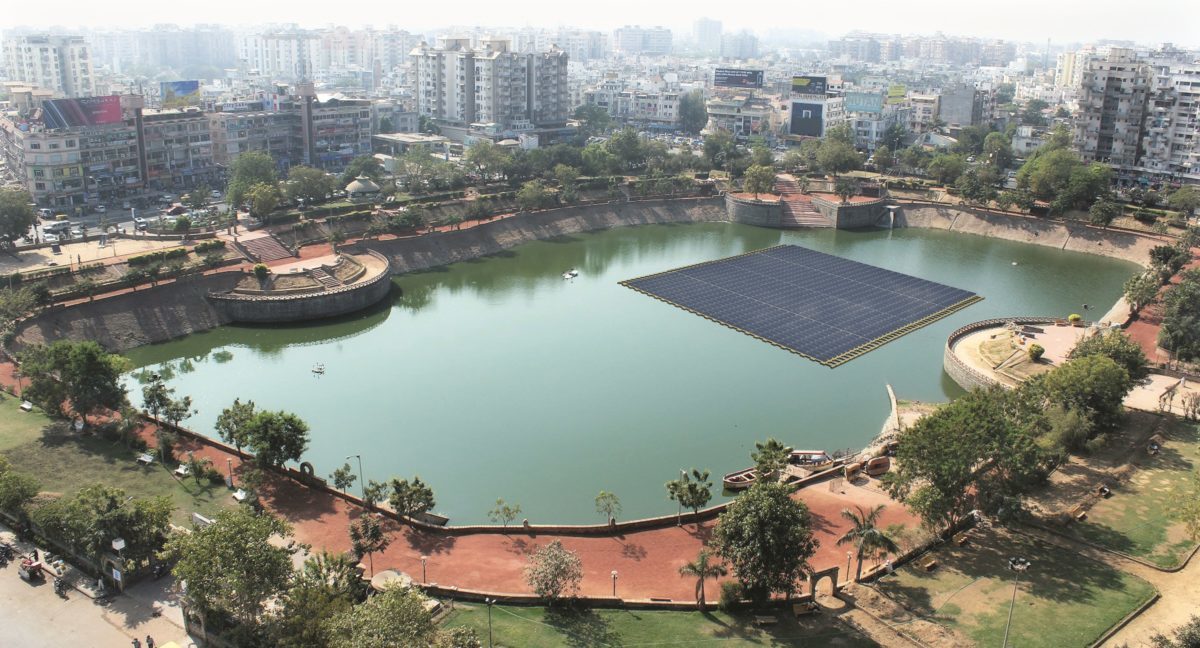The rate of technology change within the PV sector appears almost never to let up. While only a handful of years ago, floating PV was viewed as truly pioneering and even an experimental application of solar technology, it is rapidly accelerating into the mainstream.
Rysted Energy published research findings this week that pointed floating PV installed capacity in Southeast Asia increasing from around 4 MW today, up to 3 GW over the next decade. “Floating PV offers an attractive alternative for large and mega-scale ground-mounted utility solar development, allowing beneficiaries to take advantage of under-utilized dams and reservoirs,” says Minh Khoi Le, an analyst on Rystad Energy’s renewables team.
In India, the uptake of “floatovoltaics” has been equally rapid. In the lead up to its Future PV Roundtable at the Renewable Energy India Expo next week in New Delhi, pv magazine has learned of a huge pipeline of floating PV installations in the early stages of development.
Future PV heads to India
Encouragingly, it appears that costs for floating PV projects are heading in the right direction. NTPC, a major Indian power producer, with representative Shreenidhi Sharma joining the panel discussion, has tendered for a series of floating PV installations throughout India. NTPC is looking to develop floating solar arrays on the water storage facilities that are situated adjacent to many of its thermal electricity generators, delivering the double windfall of reduced water evaporation and additional power generation located at sites where existing grid capacity is in place.
Sharma, who heads up NTPC’s solar operations, reports that with the exception of one facility planned for a “run of the river” hydroelectric site, the bids to develop floating PV projects at its sites have been very competitive. “Prices of floating solar, at least for NTPC… is LCOE and capex almost in competition with large ground mounted [projects] across India.”
When these competitive prices are considered in light of the additional generation floating PV can achieve, due to lower operating temperatures, and the associated benefits in reducing water evaporation and utilizing existing grids, the draw of floating solar is clear.
Floating challenges
But that is not to say that floating PV is easy. Ivan Saha, the CTO for Indian solar manufacturer and project developer Vikram Solar said that there are “several unique challenges” presented by supplying floating solar systems from a module standpoint.
“This [floating PV] is going to be a significant area where future development will take place,” said Saha. “But the perspective we have is that technically and in other ways – materials, construction, and how it the water impacts durability and quality – that will be challenging.”
Saha reports that Vikram Solar established India’s first floating solar array, a 100 kW system, around five years ago, from which the company learned a great deal. Vikram is currently constructing a 1 MW floating project in Rajastan “with much improved technology in terms of float design.” Saha expects the 1 MW array to be competed in mid-November.
Additional to module durability and float design, safety is also an issue that floating project developers need to mindful of, said Julia Serebro, Senior Marketing Manager Asia, SolarEdge. The inverter supplier has equipped some of Europe’s largest floating projects, including a 2 MW system in Holland, and Serebro noted that DC power and water do not necessarily make good bedfellows.
“Everyone knows that water and electricity shouldn’t be put together,” said Serebro. “Safety is very important, how to design the system in the correct way and something that definitely needs to be addressed.” She also noted that enhanced visibility to the performance of modules and strings in a floating array can assist in optimizing O&M, “addressing this issue can bring a lot of value.”
This content is protected by copyright and may not be reused. If you want to cooperate with us and would like to reuse some of our content, please contact: editors@pv-magazine.com.









By submitting this form you agree to pv magazine using your data for the purposes of publishing your comment.
Your personal data will only be disclosed or otherwise transmitted to third parties for the purposes of spam filtering or if this is necessary for technical maintenance of the website. Any other transfer to third parties will not take place unless this is justified on the basis of applicable data protection regulations or if pv magazine is legally obliged to do so.
You may revoke this consent at any time with effect for the future, in which case your personal data will be deleted immediately. Otherwise, your data will be deleted if pv magazine has processed your request or the purpose of data storage is fulfilled.
Further information on data privacy can be found in our Data Protection Policy.